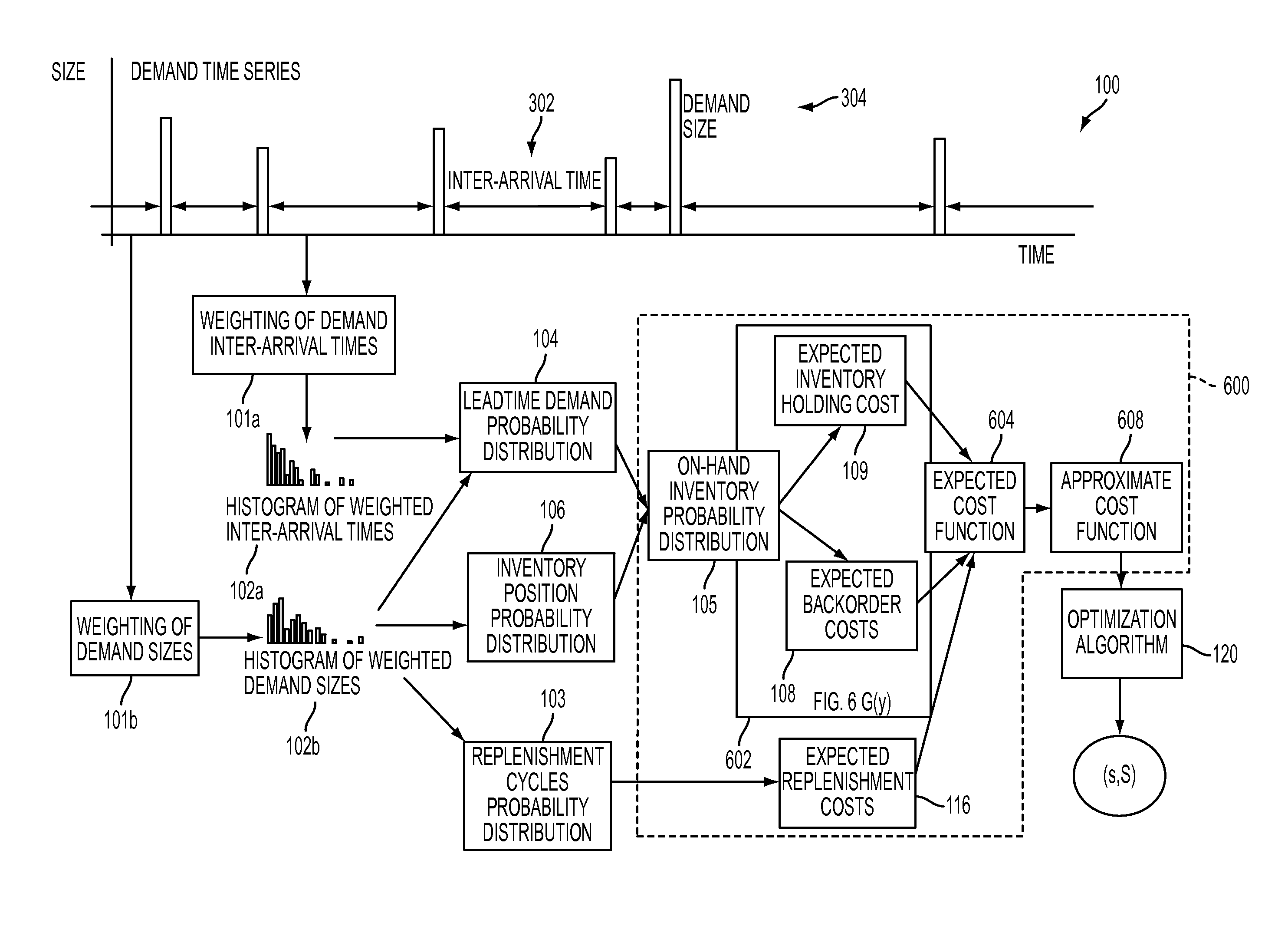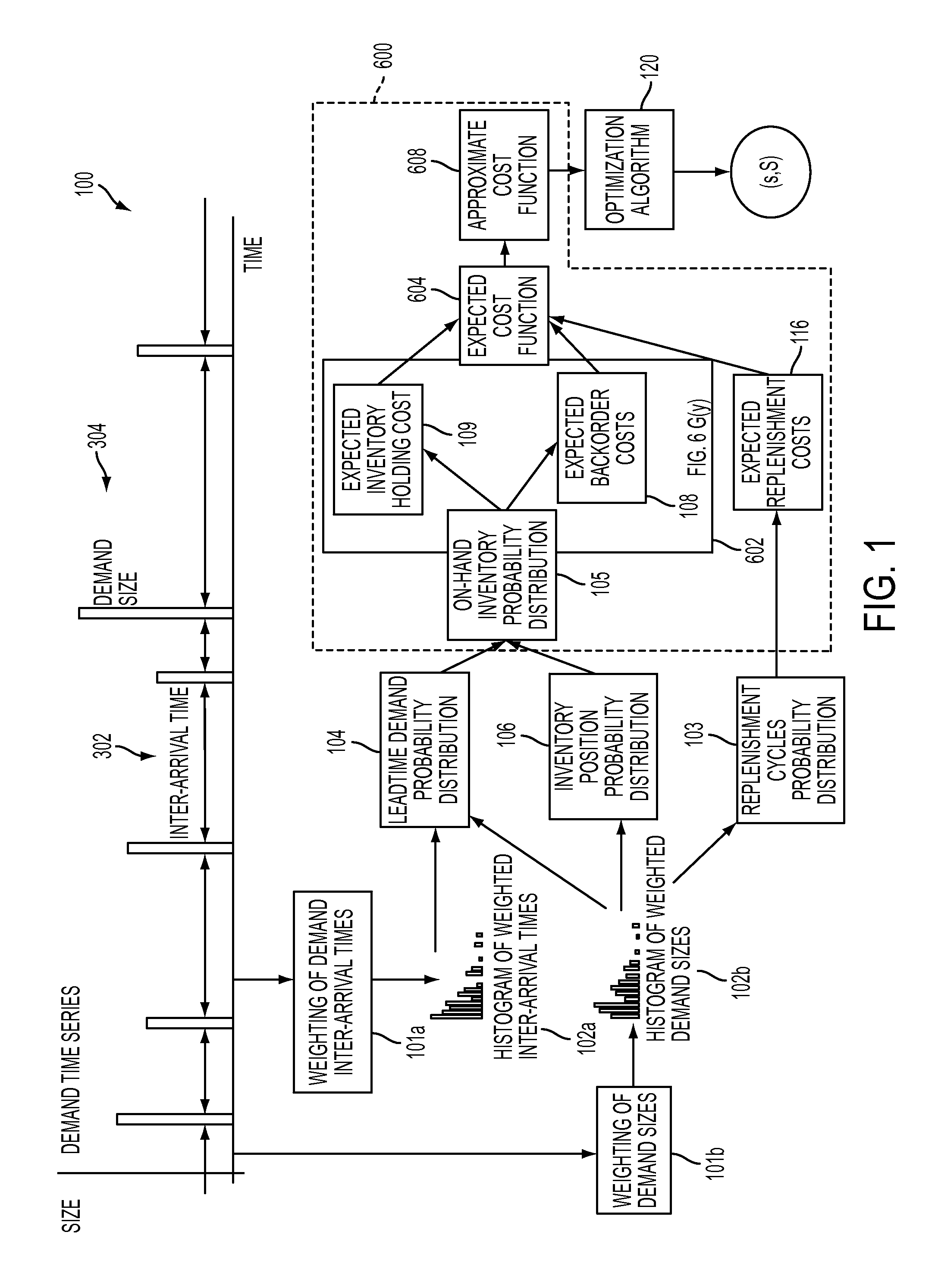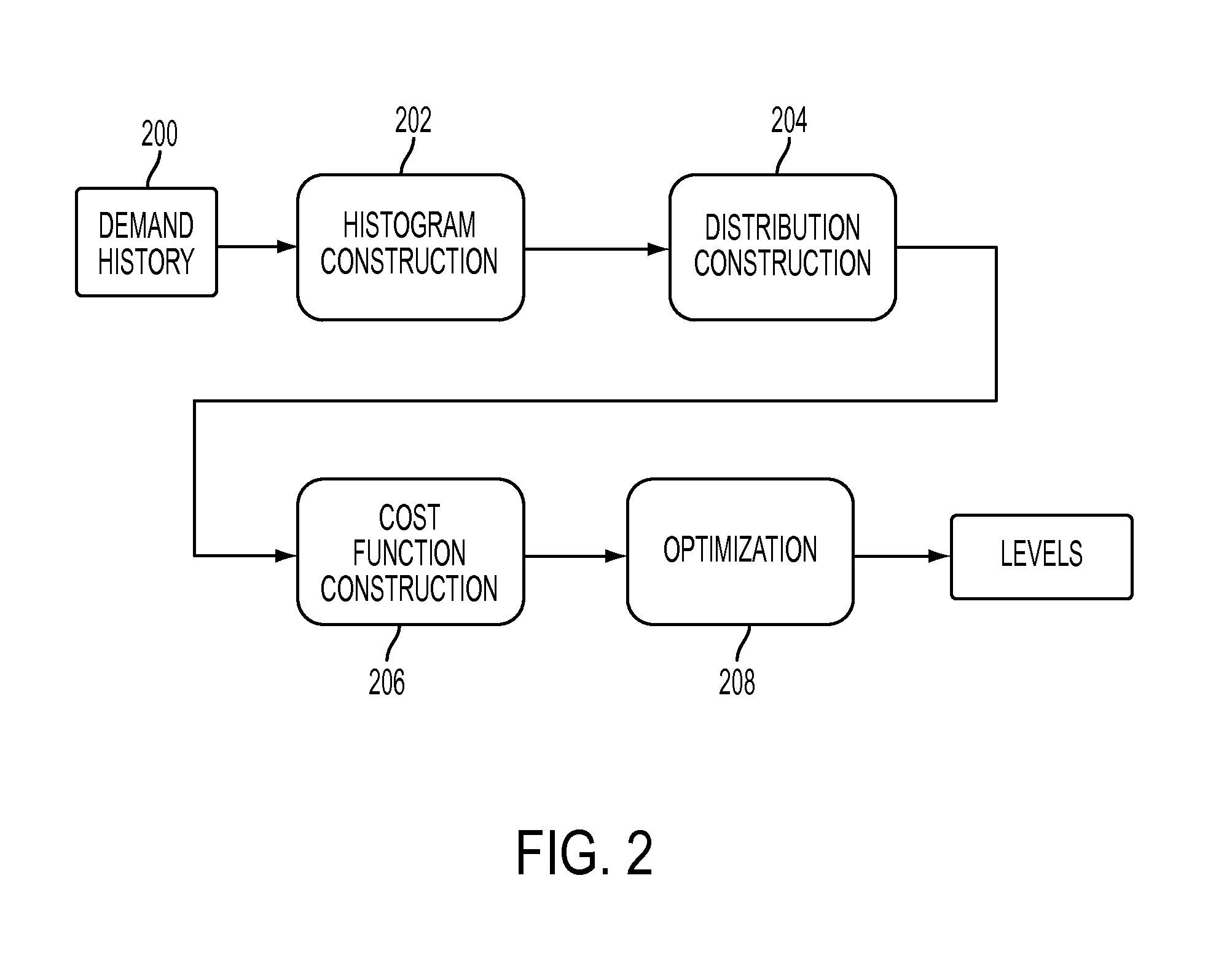Method and computer system for setting inventory control levels from demand inter-arrival time, demand size statistics
a technology of demand and inventory control, applied in the field of computing inventory control levels, can solve the problems of excessive inventory, high computational intensity in finding the optimal value of s, and errors in both the estimation of parameters and the assumed probability distribution, so as to reduce the overall expected cost
- Summary
- Abstract
- Description
- Claims
- Application Information
AI Technical Summary
Benefits of technology
Problems solved by technology
Method used
Image
Examples
Embodiment Construction
[0032]According to an aspect of an embodiment of the invention, a computer is configured to execute the described operations.
[0033]An inventory at a single site with a large population of items (thousands to hundreds of thousands of stock numbers) can be considered, where shortages are backordered and there is a fixed positive cost for a replenishment action. The method employs an (s, S) policy for inventory control. One or more goals of embodiments of the invention for computing ROPs (minimum inventory control level of s) and ROs (maximum inventory control level of S) are to:
[0034]Reduce expected requisitions backordered and the number of replenishment actions required, for a given inventory investment;
[0035]Reduce expected wait time to satisfy requisitions and the number of replenishment actions required, for a given inventory investment;
[0036]Reduce inventory investment and replenishment actions required, for a given expected wait time or expected number of backordered requisitio...
PUM
 Login to View More
Login to View More Abstract
Description
Claims
Application Information
 Login to View More
Login to View More - R&D
- Intellectual Property
- Life Sciences
- Materials
- Tech Scout
- Unparalleled Data Quality
- Higher Quality Content
- 60% Fewer Hallucinations
Browse by: Latest US Patents, China's latest patents, Technical Efficacy Thesaurus, Application Domain, Technology Topic, Popular Technical Reports.
© 2025 PatSnap. All rights reserved.Legal|Privacy policy|Modern Slavery Act Transparency Statement|Sitemap|About US| Contact US: help@patsnap.com



